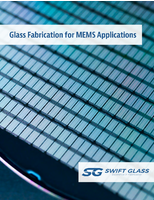NEMA evaluates hearing aid/lighting control compatibility.
Press Release Summary:
NEMA has published LC 1-2007 Test Procedure for Compatibility of Hearing Aids and Ultrasonic Lighting Control Devices. It establishes test procedures for use with a small acoustic chamber to evaluate potential interactions between hearing aids and occupancy sensors. The procedures are designed to simulate and test occupancy sensors at frequencies of 25, 32.7, and 40 kHz, and one type of hearing aid. With multiple hearing aids, the test procedures are repeated as much as necessary.
Original Press Release:
NEMA Publishes LC 1-2007 Test Procedure for Compatibility of Hearing Aids and Ultrasonic Lighting Control Devices
ROSSLYN, Va., March 28, 2008 - The National Electrical Manufacturers Association (NEMA) has published LC 1-2007 Test Procedure for Compatibility of Hearing Aids and Ultrasonic Lighting Control Devices.
This standard provides a basis to evaluate the possible interactions between ultrasonic lighting control devices and hearing aids utilizing a set of test procedures. This evaluation can be used as the basis for specifying performance criteria for both hearing aids and occupancy sensors to eliminate interference.
According to Bob Erhardt, former chairman of NEMA Lighting Controls Section, LC 1-2007 addresses compatibility between hearing aids and ultrasonic lighting control devices (occupancy sensors). Some occupancy sensors may occasionally interfere with acoustic signal processing in some digital hearing instruments causing audible noise and distortion of the signal.
"This publication provides a basis to evaluate the possible interactions between ultrasonic lighting control devices and hearing aids by specifying a set of test procedures," Erhardt said. "This evaluation can be used as the basis for determining performance criteria for both hearing aids and occupancy sensors to eliminate objectionable acoustic interference."
LC 1-2007 establishes test procedures for use with a small acoustic chamber to evaluate potential interactions between hearing aids and occupancy sensors. The test procedures are designed to simulate and test occupancy sensors at three typical, specific frequencies (25 kHz, 32.7 kHz, and 40 kHz) and one type of hearing aid.
"If there are multiple hearing aids," Erhardt said, "the test procedures are repeated as many times as necessary."
The contents and scope of NEMA LC 1-2007 may be viewed, and a hard copy or electronic copy purchased for $38, by visiting NEMA's Web site at www.nema.org/stds/LC1.cfm, or by contacting IHS at 800-854-7179 (within the U.S.), 303-397-7956 (international), 303-397-2740 (fax), or on the Web at global.ihs.com.
NEMA is the trade association of choice for the electrical manufacturing industry. Founded in 1926 and headquartered near Washington, D.C., its approximately 450 member companies manufacture products used in the generation, transmission and distribution, control, and end-use of electricity. These products are used in utility, medical imaging, industrial, commercial, institutional, and residential applications. Domestic production of electrical products sold worldwide exceeds $120 billion. In addition to its headquarters in Rosslyn, Virginia, NEMA also has offices in Beijing, Sao Paulo, and Mexico City.
NEMA. Setting Standards for Excellence
Visit our website at www.nema.org




